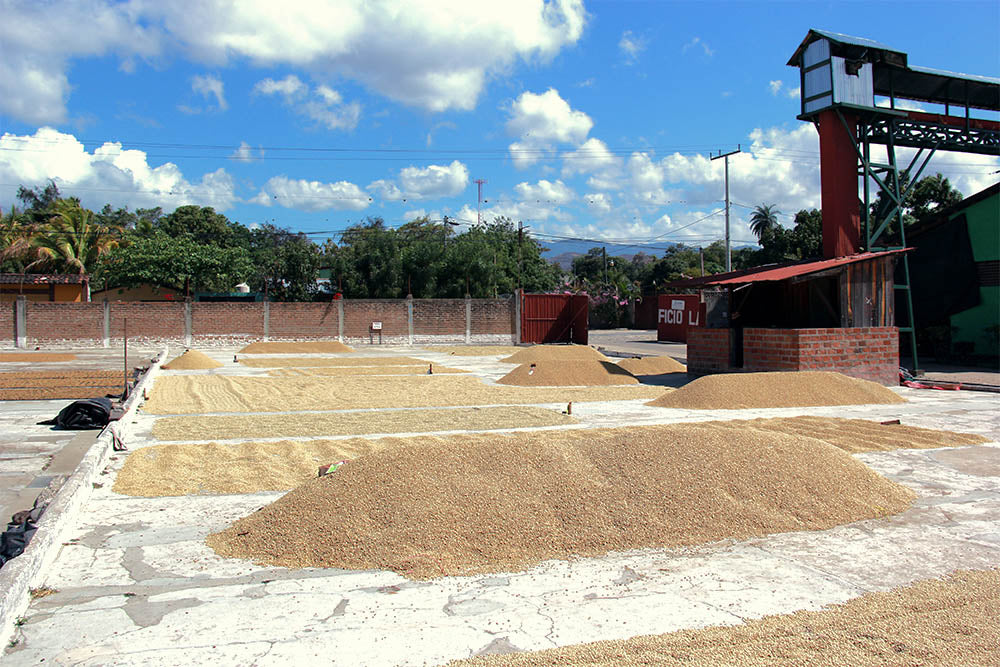
Every year, visits to Central America form a major part of my travel. In today’s specialty world, Central America’s coffees seem to be a staple in everyone’s line-up. Their ability to master processing and thus provide consistency year after year has created not only a dependency, but a general love for their coffee. Prior to leaving, I cupped samples furiously to help guide my itinerary. With many things already shifting with regards to supply, I knew it was more than likely that we would be starting a new relationship this year. The real question was — where?
Although I did travel to Costa Rica this year, I invested most of my time between the countries of Guatemala and Nicaragua. I had a rough profile and price in mind and so the majority of the work involved exploring a few choice mills and gleaning information to help me understand what a new coffee relationship might look like. In all honesty, I love Guatemala; it’s an epic country with great people, varied micro climates and beautiful coffees … However, as shocking as it might seem, this year we will not be purchasing our normal volume from Guatemala. It’s strange to be even writing that sentence and yet, as one door shuts another opens, and so for the first time this year, we will be offering a beautiful Nicaraguan coffee from a mill named La Florencia. There are a few reasons why we are moving in this direction, so let me explain.
La Florencia, despite being a good-sized enterprise, has a great vibe. It’s perhaps a bit idealistic, but I believe that great people make great coffee. So as I contemplate supply and the start of a new relationship, the people portion of the business is just as crucial as the coffee quality. I love to assess the vibe of a place and see how people treat each other. I think it often speaks to ownership and the true ethos that the organization abides by. It’s no exaggeration to say that everyone was friendly to one another here — from the patio workers to the mill manger. I am not naïve enough to think that this is always the case, but I have definitely been to places where you don’t sense this or even feel welcome.
Also, it is fairly important for me to discover if I can build genuine rapport with the mill manager and quality control personnel, as these will be the people I engage with on an ongoing basis. Lydia, the mill manager, was a fantastic individual; small and soft-spoken, she carried herself as if she had been in the biz for years. Lester, head of QC, was unbelievable. All he wanted to do was talk coffee and share their experiences with the COE. Had he been tatted and English-speaking, I swear he would have been one of your stereotypical, geeked-out Melbourne baristas.
Another selling point (and a real surprise) was that La Florencia collects a number of different varietals and processes them in many different ways. At the moment, La Florencia collects the Maragogype, Pacamara, Maracaturra, Bourbon, Typica, Catuai and Java coffee varieties. Alongside that varied portfolio, they’ve benefitted enormously from the knowledge shared by their Costa Rican counterpoint, Deli Cafe, regarding processing. Thus La Florencia processes coffee using the natural, black honey, red honey, yellow honey and fully washed methods. That is pretty incredible for any coffee origin, and especially for one which is definitely not labelled as ‘leading’. In fact, learning about their varied processing methods gave me further justification to secure this Nicaraguan coffee.
Coffee people have mixed reactions when they hear the word Nicaragua. There are good reasons for this, but I would not be honest if I did not mention that I have had some exceptional Nicaraguan coffees. So when I visited La Florencia and warmed up to the idea of Nicaraguan coffees, I began to think of this possible relationship more along the lines of a start up. The core product is solid, but the potential looks amazing.
All the big things seem to be aligned here for them to produce great specialty coffee — exceptional micro climates, good elevation and genuine enthusiasm for quality preparation via the leadership. If we can also invest what we have gleaned over our years of origin travel and offer incentives at the produce level, we might even find ourselves serving a Nicaraguan coffee that pushes the re-imagination of Nicaraguan coffees in Australia.
Let’s see what we can do. Here is to an exciting opportunity and relationship!
This article was originally published on the Five Senses Coffee website: Re-imagining Nicaraguan coffee.



